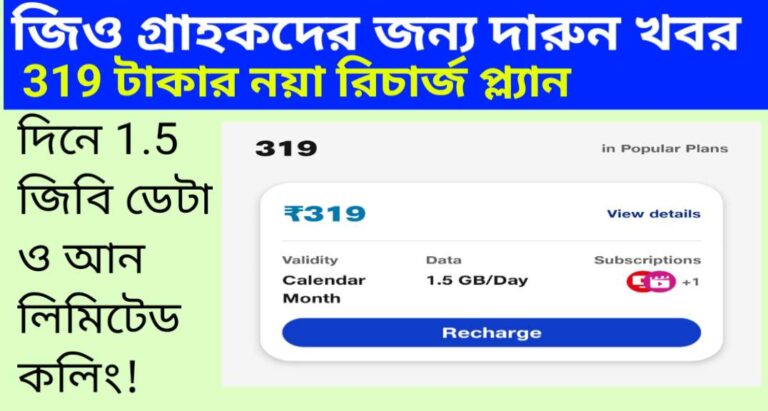Post Office Senior Citizens Savings Plan, PPF, POTD, POMIS, and New Rules for Senior Citizens in 2024
Post Office Plans New Regulations for 2024: All post office plans are currently receiving significant income on investments.
The Monthly Income Savings Scheme’s investment guidelines were recently modified by the government and included in the Budget 2023. Senior citizens have also been given a significant gift in addition to this.
Interest Rates for Post Office Schemes in 2023: Post Office is a conventional source of investments. It is a location where investments are safe and rewards are assured. It is an exceptional investment destination that is suitable for all age groups and has a long history of reliability. Good interest is currently earned on investments made in any of the Post Office’s plans (Post Office Savings plans).
The Monthly Income Scheme investment guidelines have been modified by the government in Budget 2023. Senior citizens have also been given a significant gift in addition to this.
Interest rates on certain schemes were raised in the past during the quarterly interest review. As a result, it’s critical that you understand which Post Office Scheme Interest Rate offers the highest interest rate as well as which scheme would benefit you most.
Post Office Savings Account New Regulations for 2024
Any post office around the nation allows you to start a savings account. You receive a set interest rate on deposits made into this account. This strategy appears to be a viable choice for individuals seeking fixed returns. What makes this unique.
Interest rate: 4.00% annually
Rs. 20 is the minimum balance.
Assured Pension Scheme Kerala 2024: Qualifications and Online Application Procedure
Table 2024 of Post Office Interest Rates
Scheme Apr-Jun 2022 Jul-Sep 2022 Oct-Dec 2022 Jan-Mar 2023 Apr-Jun 2023 Jul-Sep 2023 Oct-Dec 2023 Jan-Mar 2024 Apr-Jun 2024 Jul-Sep 2024 Oct-Dec 2024
Savings Account 4.0 4.0 4.0 4.0 4.0 4.0 4.0 – – – –
1 Year Time Deposit 5.5 5.5 5.5 6.6 6.8 6.9 6.9 – – – –
2-Year Time Deposit 5.5 5.5 5.7 6.8 6.9 7.0 7.0 – – – –
3-Year Time Deposit 5.5 5.5 5.8 6.9 7.0 7.0 7.0 – – – –
5-Year Time Deposit 6.7 6.7 6.7 7.0 7.5 7.5 7.5 – – – –
5 Year Recurring Deposit 5.8 5.8 5.8 5.8 6.2 6.5 6.7 – – – –
5 Year Senior Citizens Savings Scheme 7.4 7.4 7.6 8.0 8.2 8.2 8.2 – – – –
5 Year Monthly Income Account 6.6 6.6 6.7 7.1 7.4 7.4 7.4 – – – –
5 Year National Savings Certificate 6.8 6.8 6.8 7.0 7.7 7.7 7.7 – – – –
Public Provident Fund 7.1 7.1 7.1 7.1 7.1 7.1 7.1 – – – –
Sukanya Samriddhi Account Scheme 7.6 7.6 7.6 7.6 8.0 8.0 8.0 – – – –
Kisan Vikas Patra 6.9 (124 months) 6.9 (124 months) 7.0 (123 months) 7.2 (120 months) 7.5 (115 months) 7.5 (115 months) 7.5 (115 months) – – – –
Required paperwork to start a Post Office Savings Plan:
Identity Card (such as a challenge certificate, passport, or Aadhar card).
Evidence of Address (passport, Aadhar card, challenging certificate, etc.)
picture (the size of a passport)
Income Certificate (for amount determined by position)
Form for opening an account application
Additional documents attached if needed (citizenship certificate, if needed)
PM Aadhaar Card Loan Yojana: NEW SCHEME
2023 Online Application & Eligibility Standards
In addition, directions and the local post office directory should be complied with.
Sukanya Samriddhi Yojana: Learn how to invest about Rs 300 per day and receive Rs 50 lakh when it matures.
You can open a Post Office Scheme Savings Account by following these steps:
Choose the post office that is closest to you in order to open a savings account.
Visit the post office with the required paperwork, including the application form, identification verification (passport or Aadhaar card), address verification, photo, and income certificate, to open an account.
Visit the post office to submit an account opening application and provide the necessary paperwork.
Your account will be opened by the post office upon examination and confirmation of the documentation you have submitted.
When opening an account, make sure to deposit the minimum amount stated. You will receive a passbook with details on all of your account activities as soon as your savings account is setup.
You can then go into your post office savings account.





